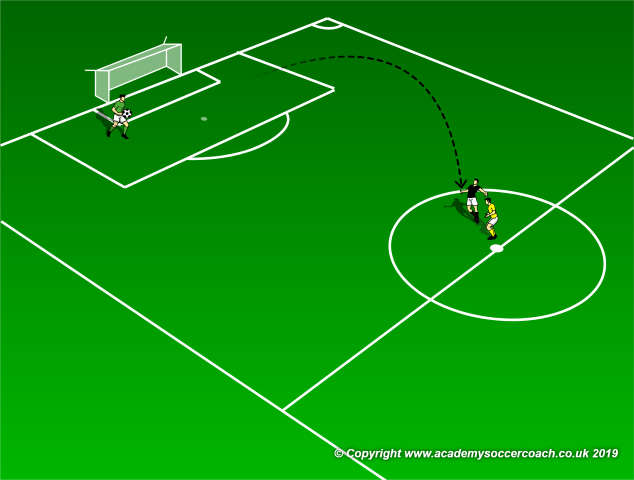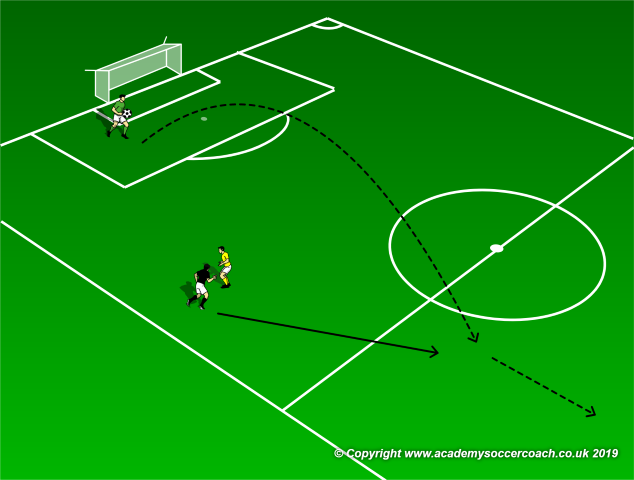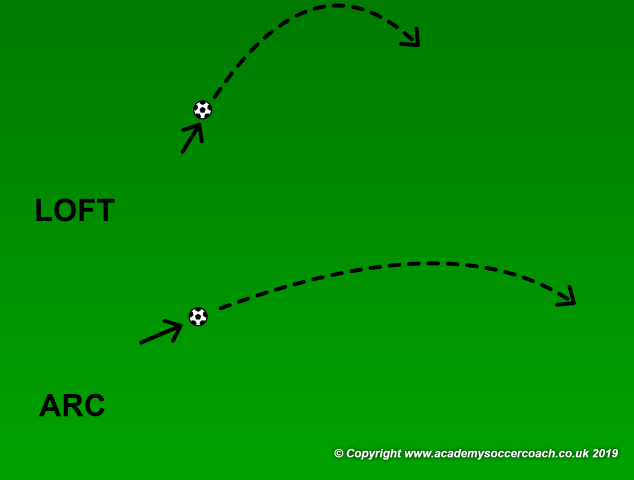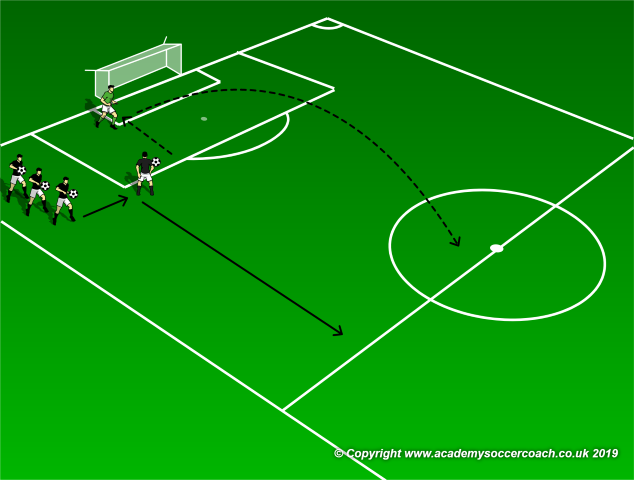By Mike Smith -
I am taking over a new program this fall, one which has struggled with coaching consistency and on field performance. This has me thinking about many of the simple things I have used to help players improve quickly over the years. In a perfect world, my keeper would not punt the ball but roll it out to an open player, who would start a chain of 5 – 7 passes to feet which would result in a service which beats the keeper for an open player to simply finish in an open net somewhere inside the 6. I have yet to spend more than a few fleeting seconds in that perfect world. In the middle school, junior varsity and even varsity ranks I always encounter the keeper who can punt it past half field effortlessly so in turn, this has been used as “ instant offense” – with the caveat the higher the punt the better.
As long as this punting does not come at the expense of the keeper’s overall soccer experience as a whole, I will admit to embracing some punting. In fact, a quick area punting can be improved on is getting the keeper to understand when to loft the ball ( the most common natural result of a keeper punt ) and when to arc the ball. The overriding principal is to get the keeper to start considering how their target player needs to receive the ball and / or which type of distribution is best in the given situation. Here are some examples:
LOFT

IF your side is better in the air. IF you just want to kill some time. IF you are trying to compact the opponent in a certain area then a lofted punt is fine. This is the most common type of punt, “ Just get it to the half line”. However, a simple punt can be a glorified clearance ( i.e. give away ) and the same instructions coaches give defenders for clearances – HIGH and WIDE, are often the same as they give goalies for punting as a distribution.? This is where the idea of arc comes in.

If you need a quick counter or your opponent holds a high line, or even if you just have speed on the wings, teaching your keepers to arc their punts – which have a flatter trajectory, spend more time going forward and will run out instead of bounce when the hit the ground – will be of benefit.

As shown above, a basic understanding of foot placement is all which is required to change loft into arc. Loft is achieved by hitting the bottom of the ball with just a bit of forward momentum. Arcing the ball requires hitting it low, but more towards the back of the ball and with more forward momentum. Yes, height allows gravity to help distance but unless you are playing against 10 footers, 10 or 12 feet of height is great to make sure the ball hits going forward for your target player to find on the run.

Set Up
Not being one to over complicate things, to work on this, simply work on it. After the keeper has warmed up, kicking into the net is always a good warm up, have players walk up, pitch the ball to the keeper ( as shown above ) and then turn and go. The coach can designate whether the balls are all arced or all lofted, or allow the chasing players to call it out as they pitch the ball to the keeper. Doing both actually makes a good progression.
Coaching Points
This is a simple concept, but will pay off in games and more importantly, add to the overall development of your keeper. This is especially impactful for those keepers who can already knock it to the moon. Get a bit more forward arc on those and with a speedy forward, those lofted punts can turn from glorified clearances to bona fide counter attacks.
By Mike Smith
Currently the Head Coach for University Heights Academy Boys Soccer in Hopkinsville, KY , Mike is in his 14th year as a high school head coach with 23 years coaching experience overall and 34 year as a student and fan of the game. He holds a USSF D License.


